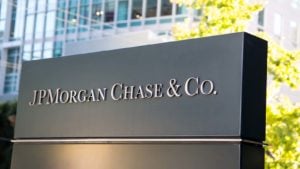Jamie Dimon, the well-known chairman and CEO of JPMorgan Chase (NYSE:JPM), told investors in last quarter’s shareholder letter that they would continue “to pay our dividend – unless the economic situation deteriorates materially and significantly.” But JPM stock may suffer if the bank does not increase the quarterly dividend in the next several weeks, as expected.

I bring this up since investors are waiting for dividend news for JPM stock. Last year, the bank declared its fourth-quarter dividend on June 27, announcing an increase from 80 cents to 90 cents per share.
There’s no news about this year’s dividend, but maybe it’s still early. After all, in 2018 JPM waited until mid-September to declare its fourth-quarter dividend hike.
The Annual Dividend Hikes and Buyback Decisions
Keep in mind that the company has consistently raised its dividend after paying the same quarterly dividend for four quarters. So far, the company has paid four quarters of 90 cents per share.
But, since then the bank has had to take major loan loss provisions. It even cut out its stock buybacks, at least until the end of the third quarter of this year.
Therefore, I suspect that once Dimon and the board decide whether they will buy back shares in Q4, they will also decide on whether a divide hike will proceed as well.
You can see in the table at the right that JPMorgan has consistently raised its dividend after every four quarters. The dividend hikes have ranged from 12% to 43% in the past three years.
Banks May Need To Add To Their Loan Loss Provisions
So far, the results of the Fed’s annual stress tests on major banks called the Comprehensive Capital and Analysis Review, have not been revealed. This is where banks tell the Fed how much they would like to increase their dividends and buy back shares.
Recently, Seeking Alpha reported that a recent S&P Global Ratings & Credit report indicates most banks will have to increase their loan loss provisions. The havoc that the lockdowns, lease forbearances and small business bankruptcies have wrecked on many companies will require these higher provisions.
However, the report implied that larger banks like JPMorgan would not have to set aside a higher portion of their loans, given that they have already made hefty provisions. For example, JPMorgan has provided for 3.3% of its loans outstanding, which is higher than the average of many banks.
Moreover, the bank has now posted two months of lower credit card delinquencies, according to Seeking Alpha, for both June and July, on a sequential basis. This may be an indication that its overall loan portfolio is improving in Q3.
The stress test and the S&P thesis that provisions are too low are two factors that might be hindering JPMorgan. They may wait until mid-September before deciding to raise their dividend and continuing buybacks in the Q4 quarter.
What To Do With JPM Stock
Keep in mind this article is not saying that JPM is considering cutting its dividend. That is not likely to happen. In fact, the stock pays a very healthy $3.60 annual dividend. That represents an attractive 3.5% dividend yield, even if the bank does not raise the dividend per share.
Moreover, consider this. Historically, over the past four years, the bank’s dividend yield has averaged 2.55%, according to Seeking Alpha. Therefore, it JPM stock was to return to its normal dividend yield over the next year, the target price would be $141.17. This represents a potential gain of 37.4%. We calculate it by taking the present dividend of $3.60 and dividing it by 2.55%.
But let’s say that the bank does decide to raise the quarterly dividend by half of the hike percent from last year, or 6%. That would make it $3.82 per share. Then, at the average historical yield, the price target would be $149.80 per share. That represents a potential gain of 45.7%.
To be even more conservative, let’s say it takes two years from now for JPM stock to reach that price target. As a result, the average annual compound return would be 20.7% each year. Add in the 3.5% yield and the expected total return would be 24.2% each year for two years from now. That is a really attractive ROI.
As of this writing, Mark Hake, CFA does not hold a position in any of the aforementioned securities. Mark Hake runs the Total Yield Value Guide which you can review here.
